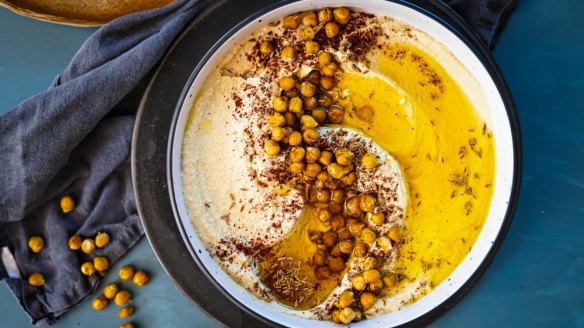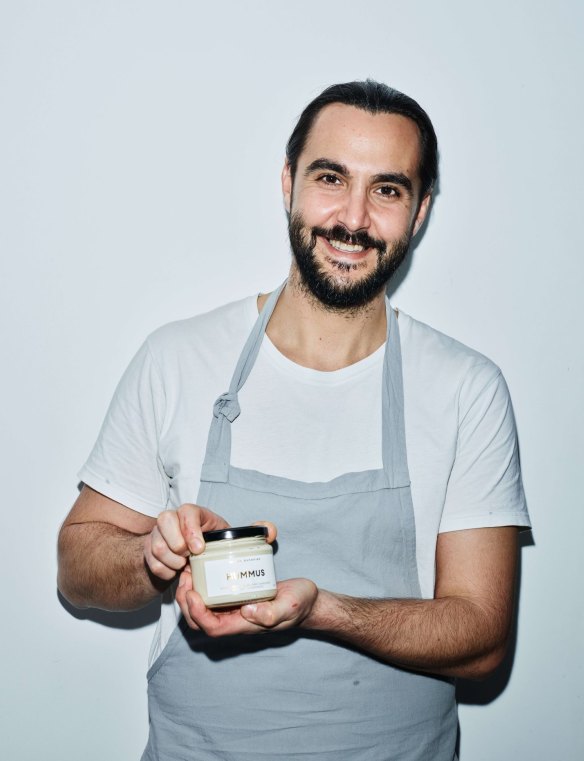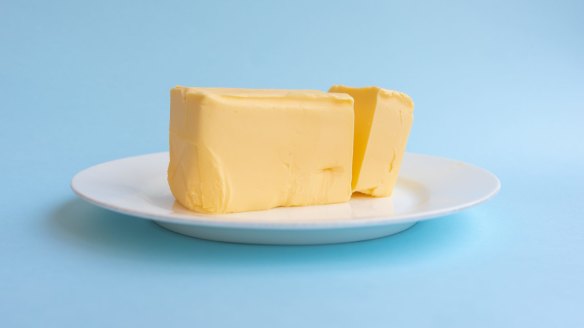Chef Tom Sarafian reveals the secrets to smooth, creamy hummus

How do I make my hummus creamy? G. Williams

We asked possibly Australia's best hummus maker, Melbourne chef Tom Sarafian, to reveal his secrets.
"You can't make great hummus with canned chickpeas. Soak quality dried chickpeas overnight in four times their weight in cold water with a pinch of bi-carb," he replied.
- Drain the chickpeas and cook in four times their soaked weight in fresh water.
- Bring to the boil then simmer until very soft. Cooking too fast will result in a chickpea that is soft on the outside but chalky in the centre.
- Drain the chickpeas and keep the cooking water.
- While the chickpeas are still boiling hot, put them in a blender with a very sharp blade.
- Blend without liquid for the first five minutes.
- Add a little of the cooking liquid (also known as aquafaba, it has proteins that act as emulsifiers), tahini, salt and ice cubes.
- The ice cubes help emulsify the fat from the tahini with the starch and aquafaba.
- Refrigerate overnight before blending in lemon juice and garlic.
"Cold hummus holds more air, which makes it feel creamier," Sarafian says.
"Remember, too much liquid will cause the hummus to lose its creaminess. Removing the skins will result in even creamier hummus."

I have moved from the US and find Australian butter a dazzling shade of yellow. Please explain. M. Fisher
Ninety per cent of the US dairy herd spend their lives indoors in sheds being fed hay, silage, grain, and food industry byproducts such as almond hulls, canola meal and citrus pulp.
In Australia, almost all dairy cows free range and eat green grass. Beta-carotene in the grass makes its way into the butterfat, which is why Australian butter is yellow and American butter is a creamy white.
Grass-fed beef cattle also absorb beta-carotene into their body fat, giving it a buttery hue.
What are your three top tips for the novice cook? L. Clarkson
- Invest in a good knife, a stone and a steel, and learn how to sharpen your knife. Your food will taste better, look better and be easier to prepare. A blunt knife requires more pressure to cut food, so it crushes delicate ingredients and is more likely to slip and cut you.
- Read the recipe. Twice. Even the introduction. There is a lot of information in a recipe and having the right ingredients and the right tools and measuring equipment in front of you, along with the sequence of the method in your head, will bring much better results in the kitchen.
- Clean as you go. You can't cook safely, efficiently or enjoyably surrounded by your own mess. Put away ingredients, deal with waste, rinse bowls, spoons, etc, and wipe down surfaces as you go. A clean tea towel hanging off your belt will give you somewhere to wipe your hands.
Send your culinary conundrums and ingredient suggestions to brainfood@richardcornish.com.au or Twitter and Insta @foodcornish.
Appears in these collections
- More:
- Food
- Brain food
